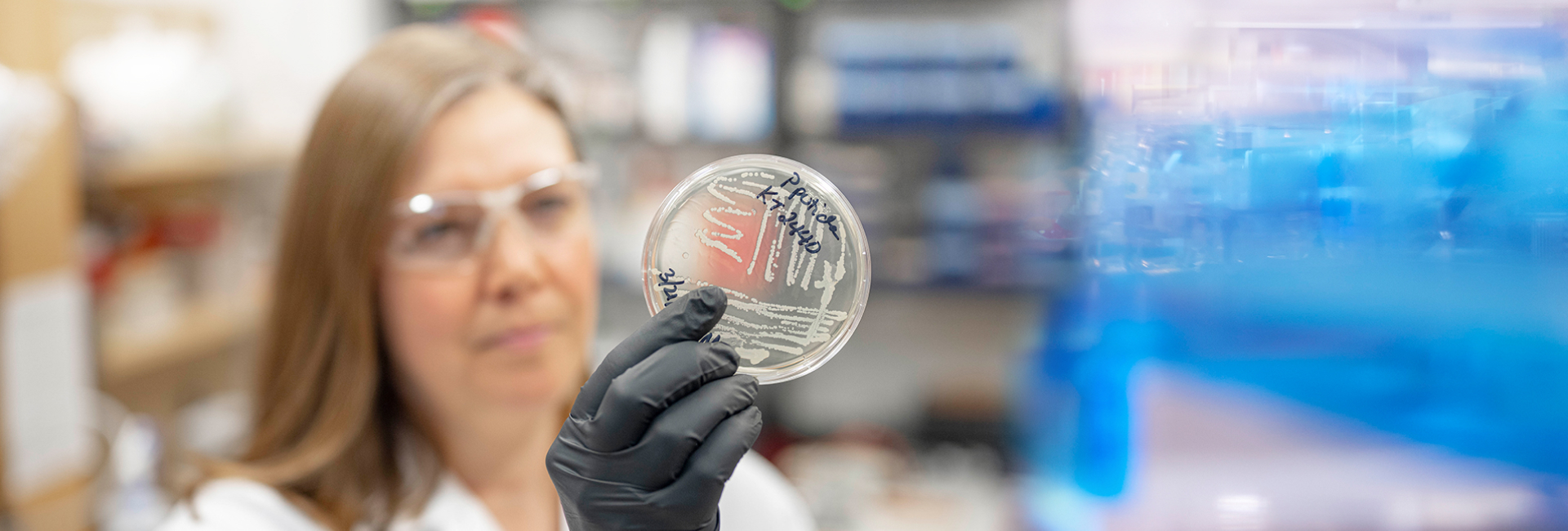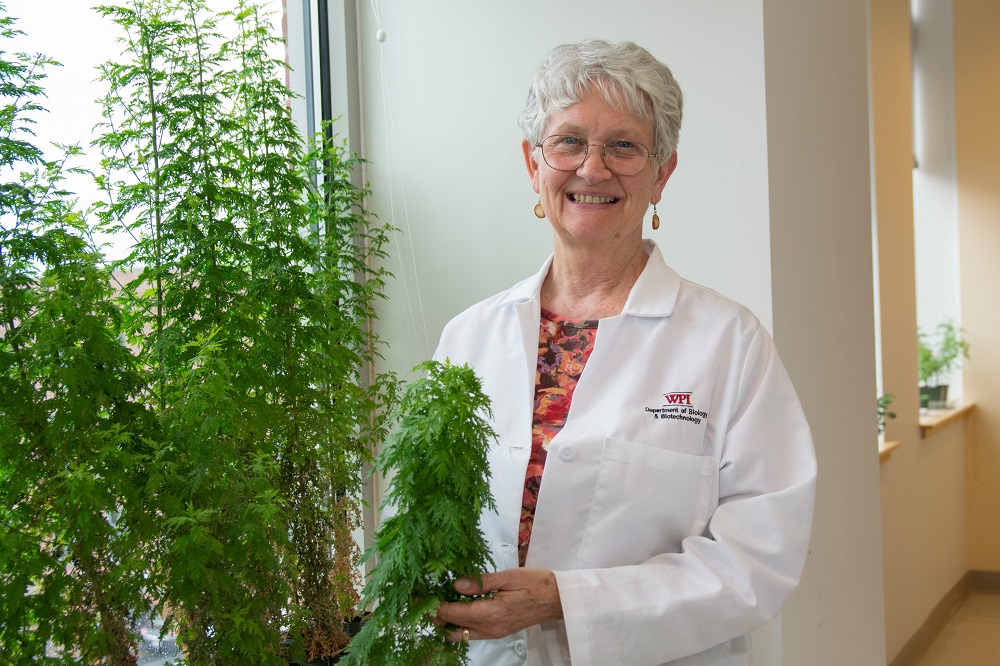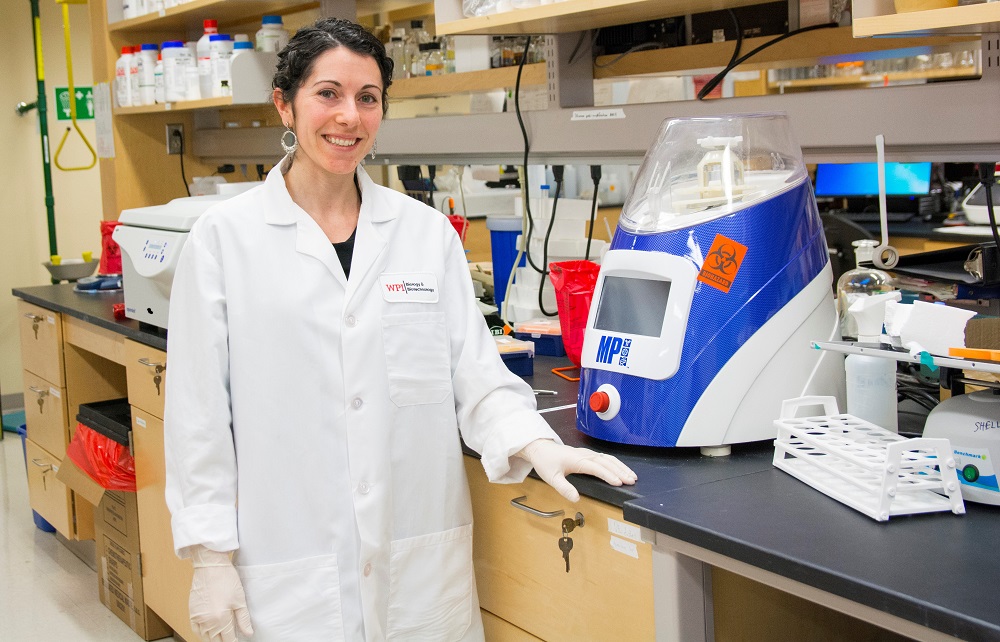With malaria still raging as one of the most prevalent and deadly infectious diseases of the developing world, hope for a long-lasting and effective treatment using dried leaves of the plant Artemisia annua took an important step forward with the results of a study at Worcester Polytechnic Institute (WPI) and the University of Massachusetts at Amherst.
The study shows that using the whole plant as a treatment essentially eliminates drug resistance to the parasites that cause malaria. The research team also found that the whole plant cured rodents infected with malaria strains that were known to be resistant to artemisinin, the chemical isolated from the Artemisia annua plant as the primary drug now used to treat the disease. The research team details the results in the paper "Dried whole plant Artemisia annua slows evolution of malaria drug resistance and overcomes resistance to artemisinin" published online January 5, 2015, in advance of print by the Proceedings of the National Academy of Sciences.
"We are encouraged by these very strong data," said co-author Pamela Weathers, PhD, professor of biology and biotechnology at WPI, who developed the Artemisia annua whole plant therapy. "It is becoming clearer that the whole plant is a powerful, natural, combination therapy that could have a dramatic impact on the human toll of this disease."
According to the World Health Organization, more than 200 million people contracted malaria in 2012 and some 627,000—mostly children under the age of 5—died from the disease. Caused by a mosquito-borne parasite, the illness is reported in nearly 100 countries and threatens nearly half of the world's population. Current therapies use a combination of an artemisinin derivative and other drugs. They are expensive to produce and often are in short supply in areas hit hardest by the disease. In addition, while the combination therapy is designed to be less prone to the drug resistance that has rendered previous antimalarial agents ineffective, the malaria parasite is beginning to show signs of artemisinin resistance, particularly in Southeast Asia.
Weathers has been studying the antimalarial abilities of Artemisia annua for more than two decades. She first described the efficacy of using of the whole plant as an antimalarial treatment in a 2011 paper published in Photochemistry Reviews. In the new study, a high-yield cultivar of the plant developed by Weathers's lab was tested in several mouse models at the University of Massachusetts in Amherst by the laboratory of Professor Stephen Rich, a molecular parasitologist.
Rich's team designed experiments to check for drug resistance by accelerating the evolution of the malaria parasite by passing them through many generations of mice. In those tests, malaria parasites treated with the standard drug artemisinin developed resistance after passing through16 generations of mice. Those same parasites were then treated with a double dose of artemisinin and they still became resistant after an additional 24 passages. Remarkably, even after 49 passages the malaria parasites never became resistant to even a low dose of the whole plant therapy.
Rich's team also tested mice infected with drug-resistant malaria, feeding them either the whole plant or pure artemisinin mixed with water. The parasite levels in the rodents’ bloodstreams were then measured at nine points after treatment began. The results showed that mice given either a low or high dose of whole plant had significantly less parasite burden than those in their respective artemisinin group.
"Making it through 49 passages is highly significant," Weathers noted. "On human terms, that could mean the whole plant acting as a natural combination therapy, may never develop resistance because the parasites do not move that quickly through generations of people in the real environment."
Weather said the effectiveness of the whole plant is likely due to the presence of other compounds in the leaves, including flavonoids, which are also known to have antimalarial abilities. The effect may create a robust natural combination therapy that works synergistically to combat the parasite and ward off resistance. Furthermore, using the dried whole plant, instead of purified artemisinin, will significantly lower the cost of treating malaria, since it would eliminate the need to extract the drug from the plant and purify it, and could greatly expand access to antimalarial therapy. Artemisia annua is classified as a "generally regarded as safe" (GRAS) herb that has been consumed by humans and used as an herbal therapy for thousands of years. Weathers envisions local operations in the developing world where farmers would grow the high-producing cultivars of Artemisia annua as a supplemental crop and deliver the leaves to processing stations, where they would be dried, pulverized, and homogenized, and where the powder would be placed in capsules or compacted into tablets.
In ongoing research, Weathers is now using a laboratory model of the human digestive system to discover which compounds in the leaves move through the intestinal wall. She will focus on several compounds, including flavonoids and terpenes, which may also help artemisinin move through the intestinal wall and into the bloodstream where it can attack the malaria parasite.



